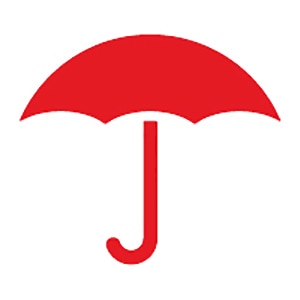
Spring Home Maintenance Tips



The milder days of spring are a perfect time to do a thorough spring cleaning and perform home maintenance. After a long winter, it is a good idea to spend time on preventive measures to help maintain your home and property throughout the year. Tasks such as cleaning out your gutters, checking for dead trees and branches and cleaning and inspecting home mechanical and plumbing systems, such as heating and air conditioning equipment, can help make spring a season of safety.
Cleaning and maintenance of your home should be done inside and out. Although the tasks are different, checking to see if all the elements of your home are in good working order can help keep your family safe and your maintenance expenses lower over the long run.
Download Our Spring Home Maintenance Checklist >
Inside Your Home
Here are a few things inside your home that should be inspected to determine if they are in good condition:
-
Electrical Outlets and Cords: Check electrical outlets and cords throughout your home for any potential fire hazards such as frayed wires or loose-fitting plugs. Extension cords and power strips are not designed to be permanent fixtures and should only be used on an interim basis.
-
Fire Extinguishers: Check your fire extinguisher at least once yearly, including the hose, nozzle and other parts to determine if they are in good condition and that the pressure gauge is in the “green” range. Check the expiration date. If necessary, move your fire extinguisher to an accessible place so that you can get to it easily in an emergency.
-
Air Conditioning: Check around the unit for indications of leaks. Before turning it on for the season, have your air-conditioning system inspected and tuned up by a professional. Check the drain lines annually and clean them if they are clogged. Change the air filter.
-
Water Heater: Check for leaks and corrosion. Check your owner’s manual for any recommended maintenance.
-
Furnace or Boiler: Have your furnace or boiler cleaned or inspected annually.
-
Under Sinks and Around Toilets: Look for any signs of leaks or corrosion on pipes, supply lines and fixtures.
-
Plumbing: Check exposed pipes and valves in your basement or crawl spaces, if safely accessible, for signs of leaking or corrosion.
-
Appliances: Check supply lines for washing machines, ice makers and water dispensers, refrigerators, and dishwashers for signs of leaks or wear and tear.
-
Plumbing for Hose Spigots and Irrigation Systems: After opening valves for outdoor water supplies, be sure to inspect components for leaks. Don’t forget to check inside plumbing as well as outdoor spigots.
-
Dryers: Dryer lint can build up inside the vent pipe and collect around the duct. Clean both the clothes dryer exhaust duct and the space under the dryer. Use a brush to clean out the vent pipe. Look for lint buildup around the lint trap and clean it as needed.
-
Smoke Detectors: Daylight savings time is a good time to change the batteries in your smoke detectors. Inspect each smoke detector to determine if all are in working order, and make sure to test them monthly. Ideally, there should be at least one smoke detector on each floor of your home, including outside of each bedroom, and one within each bedroom itself.
-
Light bulbs: Check each light bulb in every fixture for the correct recommended wattage and replace any burned out bulbs.
Outside Your Home
The cold winter months can do damage to your house as well. Here are a few things outside your home that should be inspected to ensure they are in good condition:
-
Roof: Check for any damage from snow or ice, and make any necessary repairs to reduce the possibility of leaks. If you have a skylight, check outside for a buildup of leaves and debris. Also, check the indoor ceiling for signs of leaks. Remember to put safety first any time you are on a roof. If you have any doubt, leave it to the professionals.
-
Gutters: Clean leaves and other debris from gutters and downspouts to keep water flowing and reduce the possibility of water damage.
-
Trees: Visually inspect trees for damage or rot, and remove (consider hiring a licensed professional) any dead trees that might blow over in heavy winds or during a storm. Keep healthy trees and bushes trimmed and away from utility wires.
-
Lawn Equipment: Make sure lawn mowers, tractors and other equipment are tuned up before using. Store oil and gas for lawn equipment and tools in a vented, locked area.
-
Walkways and Driveways: Repair any cracks and broken or uneven surfaces to provide a safer, level walking area.
A little home maintenance in the spring can go a long way to help keep your home safe and secure throughout the rest of the year. Learn more about Travelers homeowners insurance products, or if you’re ready to take the next step, get a quote or find an agent.
More Prepare & Prevent

Tree Maintenance and Care [Video]
Tree maintenance and care can help prevent damage to your property caused by falling dead tree limbs.

Electrical Safety in the Home
Home electrical safety is important year-round. Get outlet and extension cord safety tips, and other information related to home electrical safety.

How to Identify and Help Remove an Ice Dam [Video]
What is an ice dam? How do you remove ice dams from your roof? Learn how to tell if you have an ice dam, and get tips on removing it.